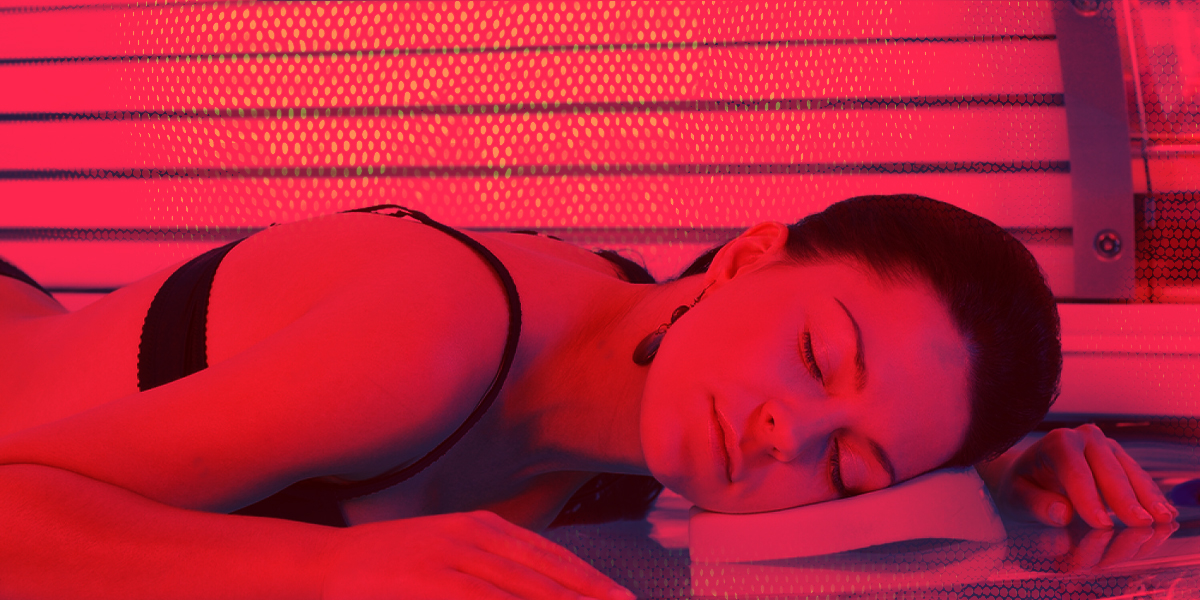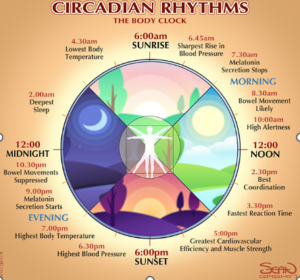
Getting better quality sleep is one the easiest ways to improve your health. When we’re overtired, we’re more likely to overeat, feel more stressed, and have less energy throughout the day.
However, it’s a difficult task. We are constantly glaring at bright screens and artificial lighting, making it even harder to get quality sleep.
However, researchers are constantly finding alternative, non-invasive methods to improve sleep quality. One emerging method is red light therapy.
Also known low-level laser therapy or photo bio modulation, red light therapy involves exposing your body to specific wavelengths of red light. This, in turn, stimulates sleep hormones and other benefits that can help to promote deeper sleep.
Ultimately, red light therapy is relatively new. However, researchers continue to study its effects, and a clear picture is forming about how it may help us get better sleep.
Understanding Red Light Therapy
Red light therapy exposes the body to low levels of red or near-infrared light. This light enters the skin and is absorbed by cells. The therapy enhances the production of ATP, which is the energy source for cells.
This increase in ATP production promotes cellular repair and tissue healing, reduces inflammation, and enhances skin health.
How Does Red Light Therapy Work?
Photo bio modulation exposes the body to specific wavelengths of light. With red light therapy, the light wavelengths fall in the red or infrared spectrum.
Both types of light penetrate the skin. However, the energy goes deeper and reaches cell mitochondria. Our cells’ ‘energy powerhouses’, the mitochondria, absorb light and create more energy. This helps cells repair themselves. That’s why red light therapy is commonly promoted for treating skin conditions and aiding wound healing.
Moreover, red light therapy stimulates cellular metabolism and produces adenosine triphosphate (ATP), a molecule responsible for carrying energy within cells. In addition to improving cellular function, it can also help improve blood circulation, resulting in the delivery of oxygen and nutrients to tissues and the brain.
How Does Red Light Help You Sleep?
Red light therapy has shown positive results in various sleep-related clinical trials. The leading theory is that when red light is exposed, the therapy promotes and regulates melatonin production.
Melatonin plays a vital role in inducing sleep. Thus, it is extremely helpful for individuals who suffer from insomnia, sleep deprivation, or have difficulty staying asleep.
The Connection Between Red Light Therapy and Sleep
According to various studies, red light therapy has few known side effects, is non-invasive, and can be easily incorporated into a nightly routine.
Here are a few reasons how red light therapy may help promote better sleep:
1. Regulates Circadian Rhythms
Circadian rhythm tracks and operates our body’s 24-hour cycle, which regulates a person’s natural mental and physical behavioral patterns, including sleep-wake patterns.
“The most important thing that influences and trains our circadian rhythms to 24 hours a day is light. And light has many, many different wavelengths,” said Dr. Raj Dasgupta, an associate professor of clinical medicine at the University of Southern California’s Keck School of Medicine. “That’s why when we talk about blue light or red light, we’re not talking about a red-colored light bulb. It’s the wavelength of light.”

Source: Return2Heath
2. Melatonin Production
Red light therapy promotes the production of melatonin, often referred to as the “hormone of darkness” or “sleep hormone.”
Melatonin is released when the body is in a deep sleep and naturally occurs during the nighttime compared to the daytime. Red light helps with healthy melatonin production and promotes secretion to induce a better sleep cycle.
3. Reduced Stress and Anxiety
Red light therapy can reduce stress and energize the body by:
- Producing higher cellular energy
- Improving blood circulation
- Better brain functionality
- Produces anti-inflammatory compounds
Due to these benefits, the body naturally produces feel-good chemicals, creating a more conducive environment for restful sleep.
4. Enhanced Blood Flow
As mentioned earlier, red light therapy enhances blood flow. This improved circulation increases brain activity and maintains health by ensuring a steady supply of oxygen and nutrients. When all the brain functionality parameters are met, it helps with better sleep regulation.
5. Reduction of Pain and Discomfort
We often cannot sleep due to physical pain and discomfort in the body. Red light therapy helps reduce pain and inflammation. Due to the decreased pain levels, the body reaches a relief stage, making it easier for individuals to get more restful sleep. This therapy is highly beneficial for individuals suffering from chronic pain conditions.
Research on Red Light Therapy and Sleep
With ongoing research on red light therapy, let’s look at some of the claims and how this promising therapy is helping individuals from different segments improve sleep. The relationship between red light therapy and rest:
A. Study on Athletes
A study published in the journal, ‘Journal of Athletic Training’, conducted a study on the effects of red light therapy on sleep quality in female basketball players. Nearly 20 athletes took part in the trial for 14 consecutive days and received 30 minutes of red-light irradiation.
The researchers found that red light therapy improved sleep quality. It was noted that the athletes who received this non-invasive therapy experienced improvements in sleep disorders.
B. Sleep in Older Adults
This published clinical article focused on different light wavelengths, such as blue and red light, and their effect on sleep disorders in older adults. The finding showed that the impact of different lights on the circadian system in older adults has shown positive results. It helped the participants to fall asleep and enhanced their sleep quality.
C. Shift Workers
Shift workers who have irregular working hours often struggle with disrupted sleep patterns. A study on the effects of light therapy on shift workers showed it helped improve their sleep quality and reduce sleepiness during the day.
Conclusion
Red light therapy offers a promising non-invasive alternative to many lifestyle and clinical disorders. And that’s especially true when it comes to promoting better sleep quality and other sleep-related issues.
Researchers are continuously conducting further studies to understand its full potential. However, studies indicate red light therapy helps boost melatonin production, reduce stress and anxiety, regulate circadian rhythms, enhance blood flow, and more.
